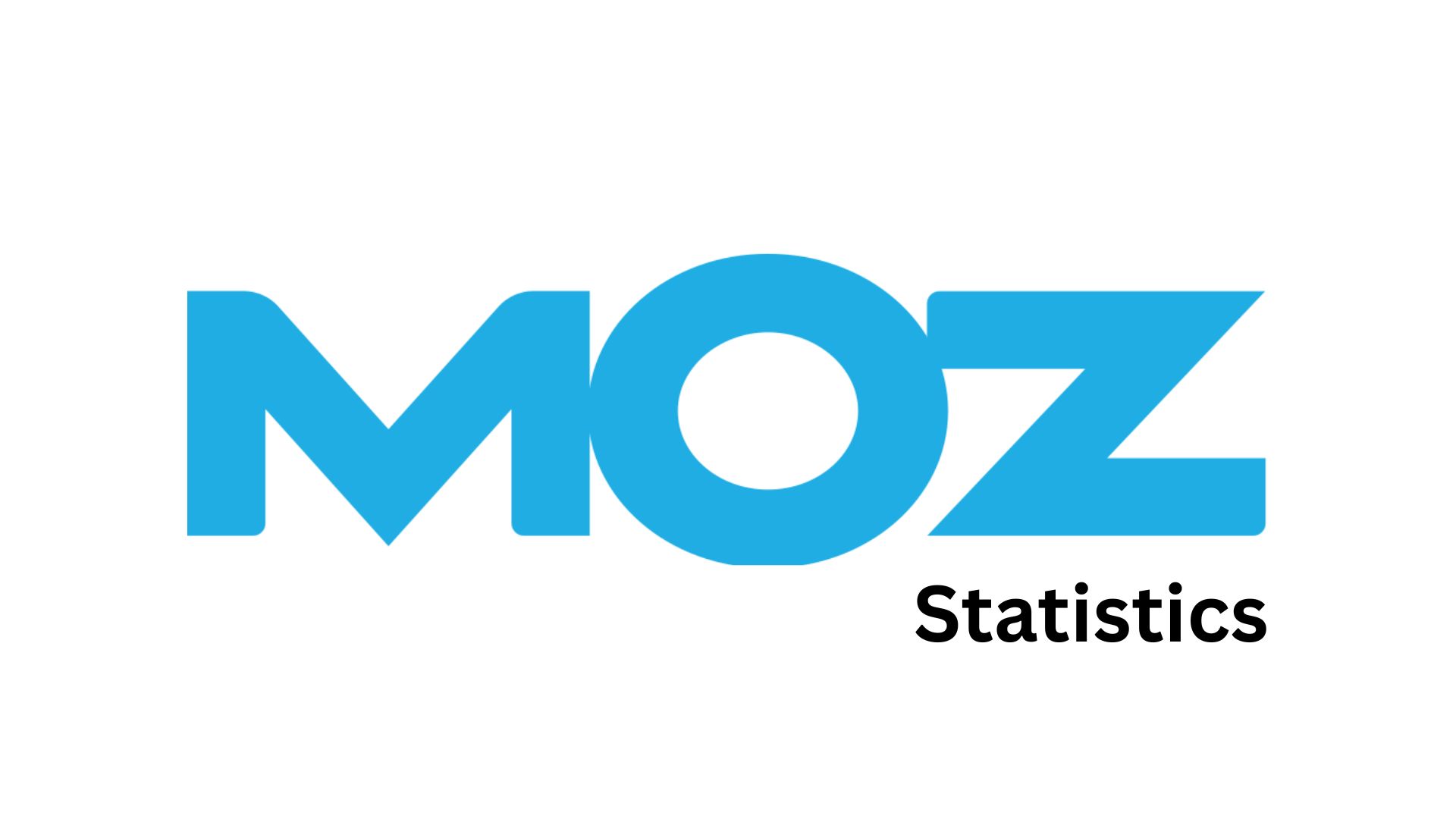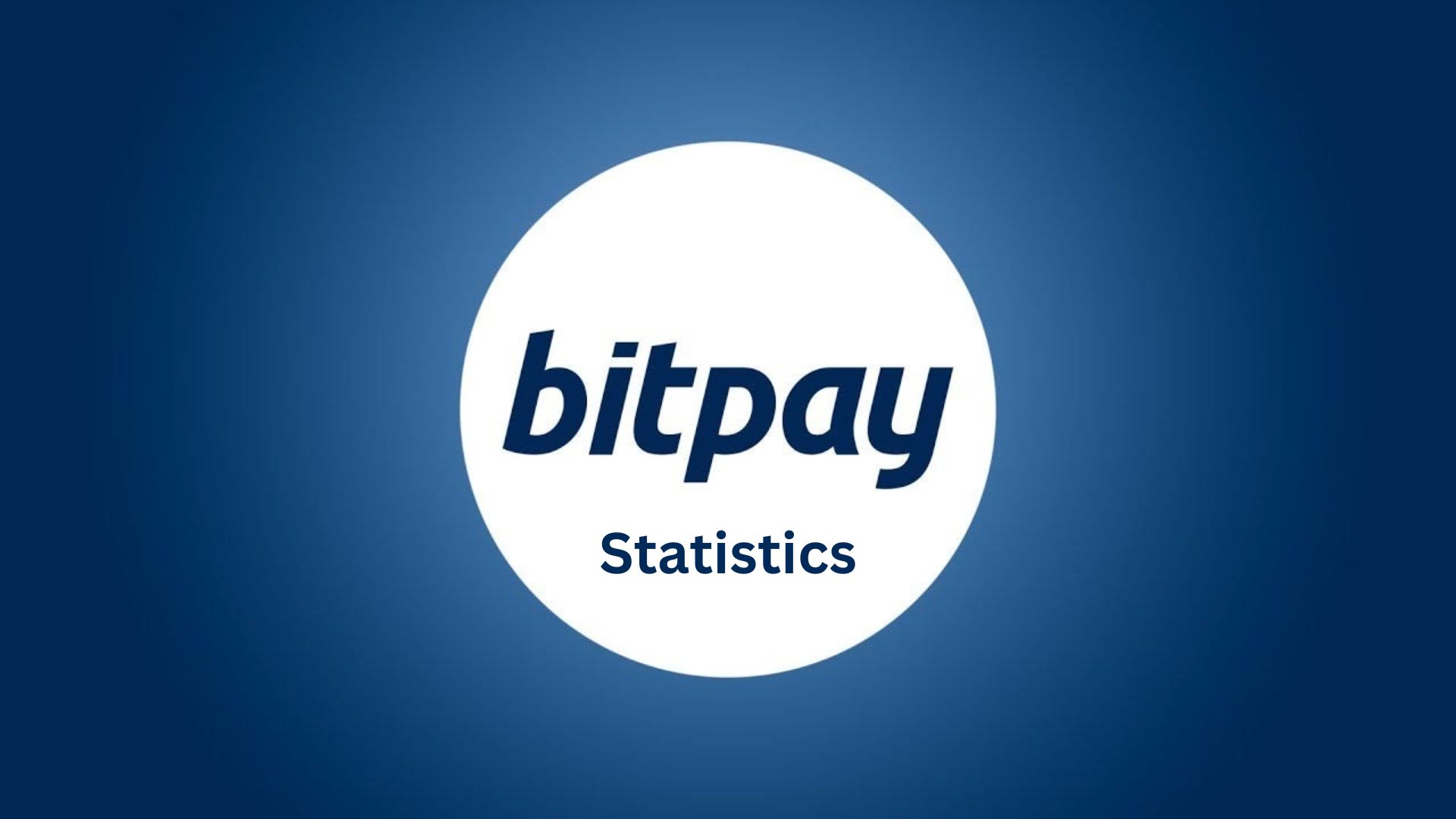Small Business Ownership Statistics And Facts (2025)
Updated · Jul 10, 2025

Table of Contents
Introduction
Small Business Ownership Statistics: Small businesses stand as the real backbone of the world economy. Even in 2024, they continue to be instrumental in job creation, innovation, and community development. From busy urban centres to remote rural districts, small businesses provide the edge of economic growth and stability.
This article covers some of the latest small business ownership statistics from across the globe, pointing out major trends, challenges, and opportunities.
Editor’s Choice
- Quality of labor was the top challenge for 21% of business owners in an August 2024 survey; inflation was cited by 24%, up from 23% in 2023.
- As of the second quarter of 2024, 61% of small-business owners characterised their businesses as being in good health, up sharply from 25% in 2020 (a low point associated with COVID).
- Hispanic-owned businesses numbered 4.5 million, with US$619.8 billion in sales and nearly 3 million in employment.
- Small enterprises employ 59 million workers, which is 45.9% of the entire workforce in the United States.
- In 2024, the nation witnessed 34.8 million small businesses with an annual increase of 4.5% and almost constituting 99.9% of all U.S. businesses, being recorded.
- Minority-owned businesses grew to 9.7 million in number, with US$1.78 trillion in revenue and 9.4 million workers employed by them.
- Apart from California, Texas and Florida are also leading in terms of small businesses, with California hosting 12.1% of the national total population.
- Generation X (aged 39–54) owns 47% of small businesses, followed by Boomers with 37%, then Millennials with 16%.
- In the United States, small businesses without a single employee constitute 81.9% (28.5 million) of the total small businesses.
- In the transportation and warehousing sector, 16% of minority-owned businesses operate. The average new small business owner is around 34 years old.
- Heavy workloads mean that 19% of small business owners work more than 60 hours a week, and another 63% work more than 50 hours a week.
Number of Small Businesses
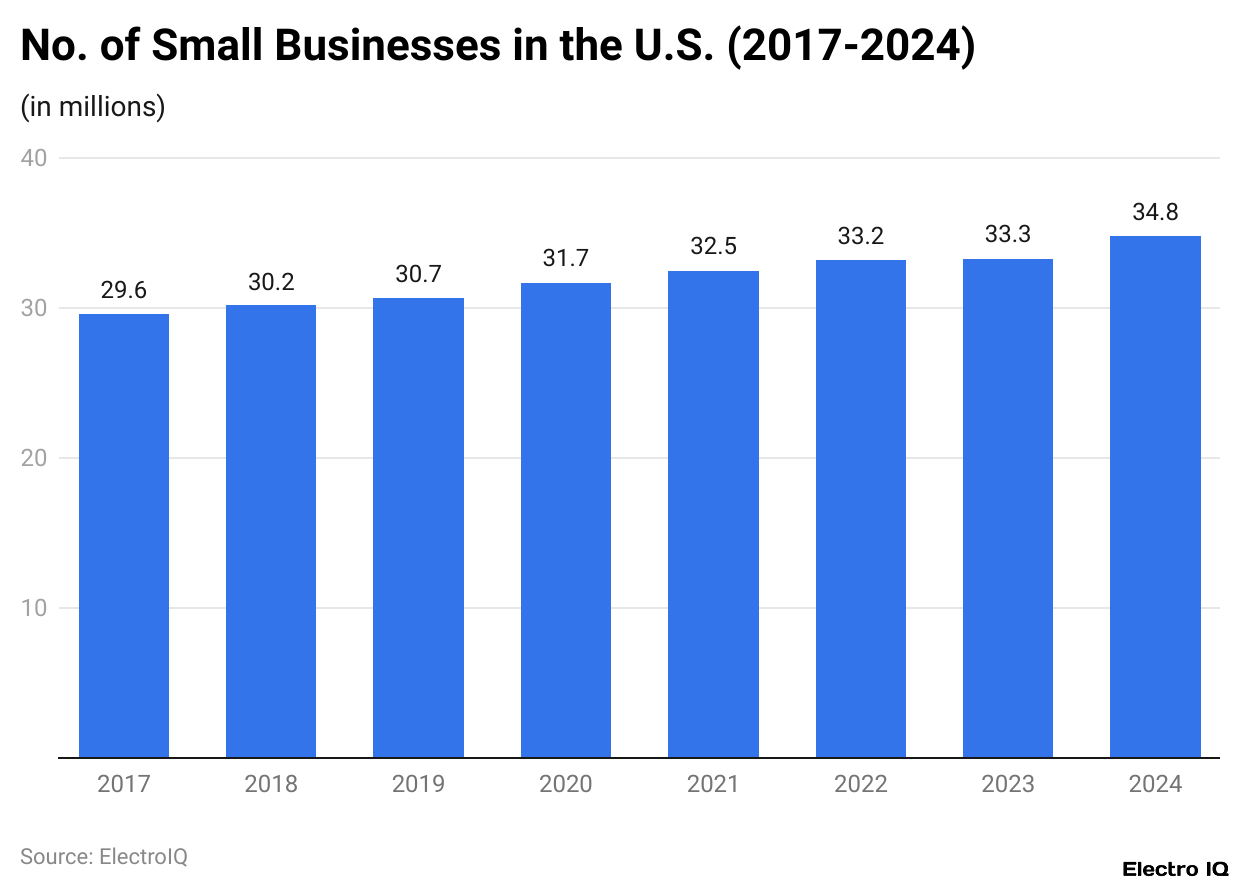
(Reference: oberlo.com)
- In 2024, the United States counted 34.8 million small businesses, a 4.5% hike over the previous year. It has witnessed steady growth since 2017, with an accumulated increase of 17.6%.
- Small businesses continue to be the dominant force in every American business scenario, accounting for 99.9% of all businesses domiciled within the country.
- Out of these 34.8 million small businesses, around 28.5 million or 81.9% constitute non-employer firms, which maintain their operations without the employment of any paid workers.
- Moreover, 5.7 million small businesses have fewer than 20 employees, while approximately 607,000 businesses have fewer than 500.
- A small business is said to have fewer than 500 employees according to the U.S. Small Business Administration. They are also important in the labor force, employing about 59 million, or 45.9%, of the total workforce in the United States, while California tops the list with its 4.2 million small businesses, which make up 12.1% of the national total.
- Texas and Florida follow behind, with around 3.3 million small businesses each. The numbers outlined above give a small-scale illustration of how vital small businesses are to economic uplift and employment in the United States.
U.S. Small Businesses’ Most Important Problem

(Reference: statista.com)
- In a survey carried out in August 2024, focusing on small businesses in the United States, approximately 21% of business owners stated the quality of labour was their number one challenge.
- More than one in every five small businesses was struggling to find workers who had the right skills, qualifications, or even a level of reliability that would sustain their operations.
- Alongside labor quality, inflation was also a big issue. About 24% of survey respondents said rising costs are the greatest problem confronting their businesses.
- This is a slight increase from August 2023, when 23% were considering inflation as the biggest concern. Thus, small business operations are affected by labor issues and economic pressures in 2024.
U.S. Small Business Index
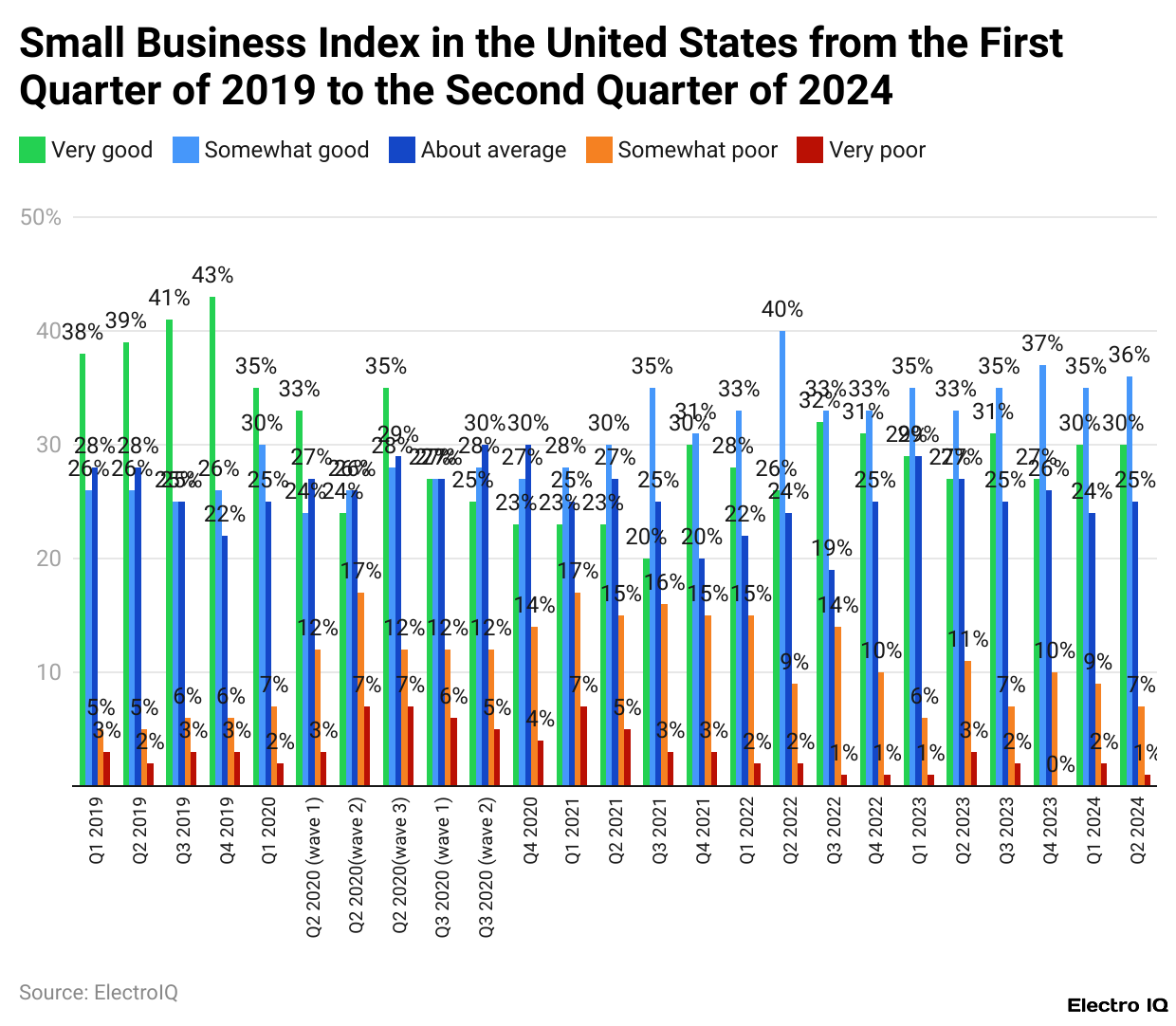
(Reference: statista.com)
- In the second quarter of 2024, a survey indicated that 61% of small business owners believed their businesses to be in good shape, thus correlating with a positive outlook.
- Another 24% of the respondents said that they were average, stable, yet not so great, indicating some performance.
- For contrast, at the end of 2019, right before the COVID-19 pandemic, the number of small businesses referring to themselves as in “very good” health was at an all-time high of 43%.
- Moderately affected due to the economic tides of the pandemic, it dropped sharply to 25% at the close of 2020.
- Those numbers for 2024 depict that there has been a strong upswing in confidence among small businesses since that dip.
Average Age of Small Business Owners
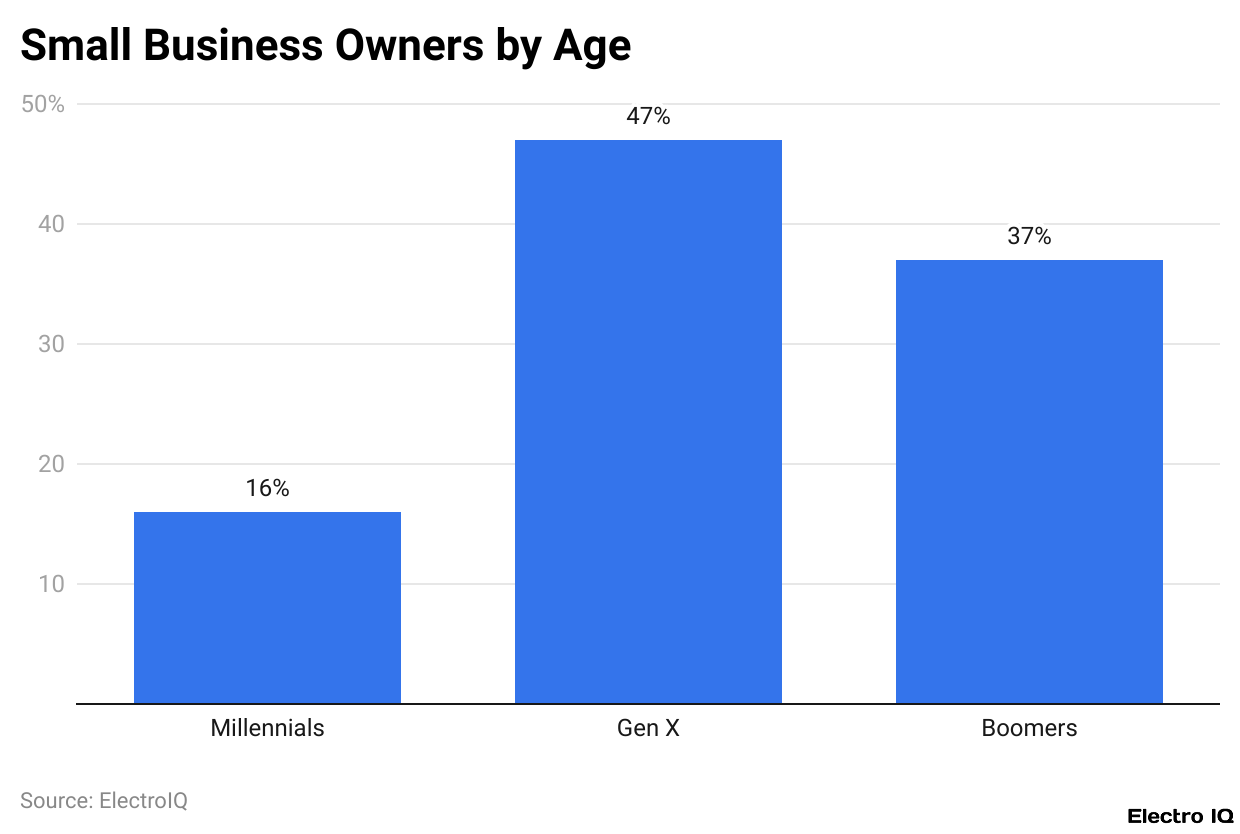
(Reference: oberlo.com)
- As per Oberlo, Small business ownership statistics show that when analysing the age distribution of small business owners in 2024, the study revealed that Generation X was still the controlling group.
- The people in this generation, between the ages of 39 and 54, compose about 47 % of all small business owners. This is just slightly under the 47.2 % they made up as recently as 2023, showing a very slight drop of 0.2 %age points.
- Baby Boomers, currently aged 55 to 73, form the second-largest group at 37 % of small business owners. This %age has declined from 39.6 % in 2023.
- This 2.6 %age point drop is largely related to the fact that many Boomers are hitting retirement age and that the pandemic created an environment that accelerated some of those early retirements.
- Together, Generation X and Baby Boomers form 84 % of the total small business owners in the U.S. in 2024. That is another way of saying that more than four-fifths of these business owners fall between the ages of 39 and 73, which is the generational association of the average small business owner of today.
- Lastly, Millennials, presently aged 23 to 38, represent 16% of small business owners in 2024. There are 3.1 %age points more in 2024, somewhat suggesting a slow-moving trend of the younger adults going toward entrepreneurship.
- Experts rightly believe this momentum will continue, with the average age for new business owners currently assessed at approximately 34 years.
- One other surprise is that the two generations of small business owners from the post-war generation, those older than the Boomers, were made almost extinct by 2024. Barely a year before, they made up 0.3% of owners, and this count has now been reduced even further.
Hispanic-Owned Businesses Statistics
- Hispanic-owned businesses are also making tremendous contributions to the American economy.
- By 2024, they comprised 4.7% of all small businesses, with a total of 4,537,836 Hispanic-owned companies.
- These companies generated a whopping US$619.8 billion in sales revenue.
- Among Hispanic businesses, there are 346,836 employer firms nationwide employing 2,930,548 workers, while Hispanic-owned nonemployer firms amount to 4,191,000, which is also a testimony to the entrepreneurial spirit of this community.
- These firms are creating jobs and boosting economic activities at the same time.
Minority Owned Small Business Statistics
- Minority-owned businesses have always been an essential part of the small business ecosystem. Nationwide, there exist 9,709,323 minority-owned firms.
- These firms cumulatively bring a gross revenue of US$1.78 trillion, averaging about US$184,123 per enterprise every year.
- They employ 9.4 million people. Among them, 1,048,323 have paid employees, and the other 8,661,000 are non-employer businesses.
- In all, sales of non-employer minority-owned firms total US$306.09 billion, or an average of about US$35,341 for each business.
- A good 16% of all minority-operated companies are reported to be involved in transportation and warehousing, indicating that the businesses are well represented in logistics and mobility-related trades. This shows increasing economic strength and diversity among small U.S. businesses.
Time Management By Small Business Owners
- According to research by The Alternative Board, small business ownership statistics state that small-scale entrepreneurs often tend to work longer hours than the standard workforce.
- According to the records, 19% of small-scale entrepreneurs work more than 60 hours per week, overcoming the general 40 hours in a workweek.
- Among small business owners, roughly 30% work 50 to 59 hours weekly. The largest segment, some 33%, put in 40 to 49-hour workweeks. Then you have the 14% that fit in 30 to 39 hours, and only 5% that do so for 30 hours or less in a week.
- The large share of long working hours and sacrificing of time for personal enjoyment seems to show that the majority of small-business owners are busy keeping the business intact, more than anything else.
Conclusion
Small Business Ownership Statistics: In 2024, small businesses continue to be critically important for the global economy. They have faced a number of challenges, such as revenue falls, wage limits, and access to capital, yet they have demonstrated the trait of resilience and adaptability. With the advent of digitalisation and supporting government policies, there has also been room for expansion and innovation.
The successful small business will be of good consequence for sustainable development and inclusive growth all over the globe as it traverses through an evolving economic landscape.
Sources
FAQ.
There are 34.8 million small businesses in the United States in 2024, accounting for 99.9% of all businesses. These companies employ about 59 million persons, constituting 45.9% of the entire U.S. working population.
In the August 2024 survey, inflation (24%) and labor quality (21%) were identified as the top concerns for small businesses. Business owners have noted problems in finding skilled, reliable workers and faced with rising costs.
Small business ownership is led by Generation X, aged 39–54, at 47%, followed by Baby Boomers at 37% and Millennials at 16%. The average age of a new small business owner is currently around 34 years.
In 2024, US$1.78 trillion revenue-generating 9.7 million minority-owned small businesses exist, employing 9.4 million individuals. Hispanic businesses form 4.5 million, having US$619.8 billion in sales and nearly 3 million employees.
Small business owners definitely tend to work very long hours: 19% are working over 60 hours per week, 30% from 50 to 59 hours, and 33% from 40 to 49 hours. This means that more than 80% of small business owners lose out on their selves by working more than 40 hours per week.

Aruna Madrekar is an editor at Smartphone Thoughts, specializing in SEO and content creation. She excels at writing and editing articles that are both helpful and engaging for readers. Aruna is also skilled in creating charts and graphs to make complex information easier to understand. Her contributions help Smartphone Thoughts reach a wide audience, providing valuable insights on smartphone reviews and app-related statistics.





